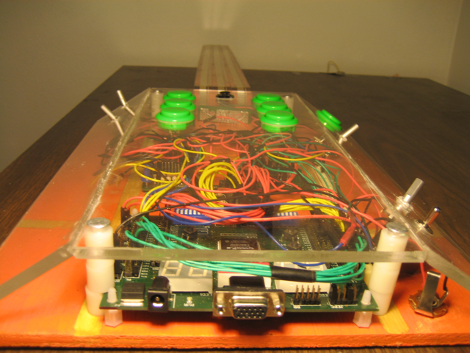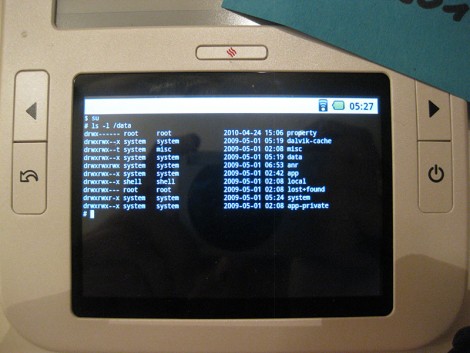Cell phone chopper control

Control your tiny inexpensive helicopter with a Nokia N900. The chopper uses an infrared remote control, just like a television. Getting this to work was just a matter of figuring out the IR commands and writing an app for the phone to spit them out.
Fade to black; inconspicuously

Lost interest in your TV-B-Gone? Give it one last whirl by throwing it inside of an old iPod case. The dock connector hole is just about the right size for the LEDs and the kit fits nicely in the old 3G type iPods. With this kind of disguise it should be a lot harder to spot who’s messing with those TVs.
Surf your way to a cleaner house

This guy uses a roomba to clean his floors. The Wii balance board lets him lean forward and back to surf the little bot around the room. This seems a little more exciting than the exercise programs the board was originally designed for. [Thanks DXR]
G1 gamepad

[Tobias Weber] built a gamepad for the G1 Android phone. He used an old Atari control, cut out two buttons and the d-pad, and glued them in a housing to fit the G1 keyboard. Each presses a button on the phone’s keyboard which can be mapped through the emulator software.
Social power monitoring

Here you see a very small portion of the power meter installed in a Cafe at UC Berkeley. It shows the energy usage for the building, separated into categories such as lights, power outlets, and coffee machines. This lets students know how much juice they’re draining by plugging in their gadgets. The color bar uses 93 ShiftBrite modules controlled by an Arduino.




















